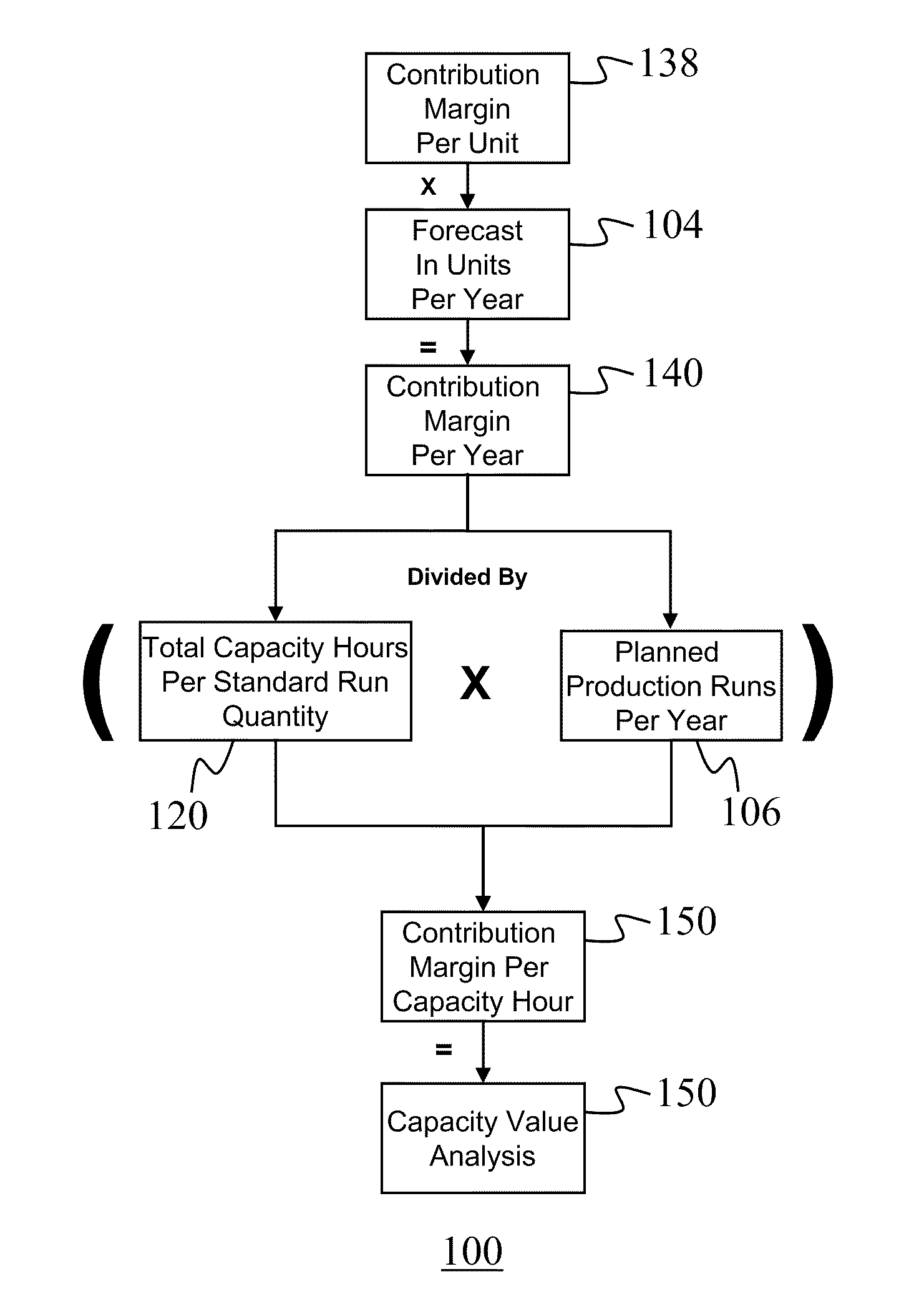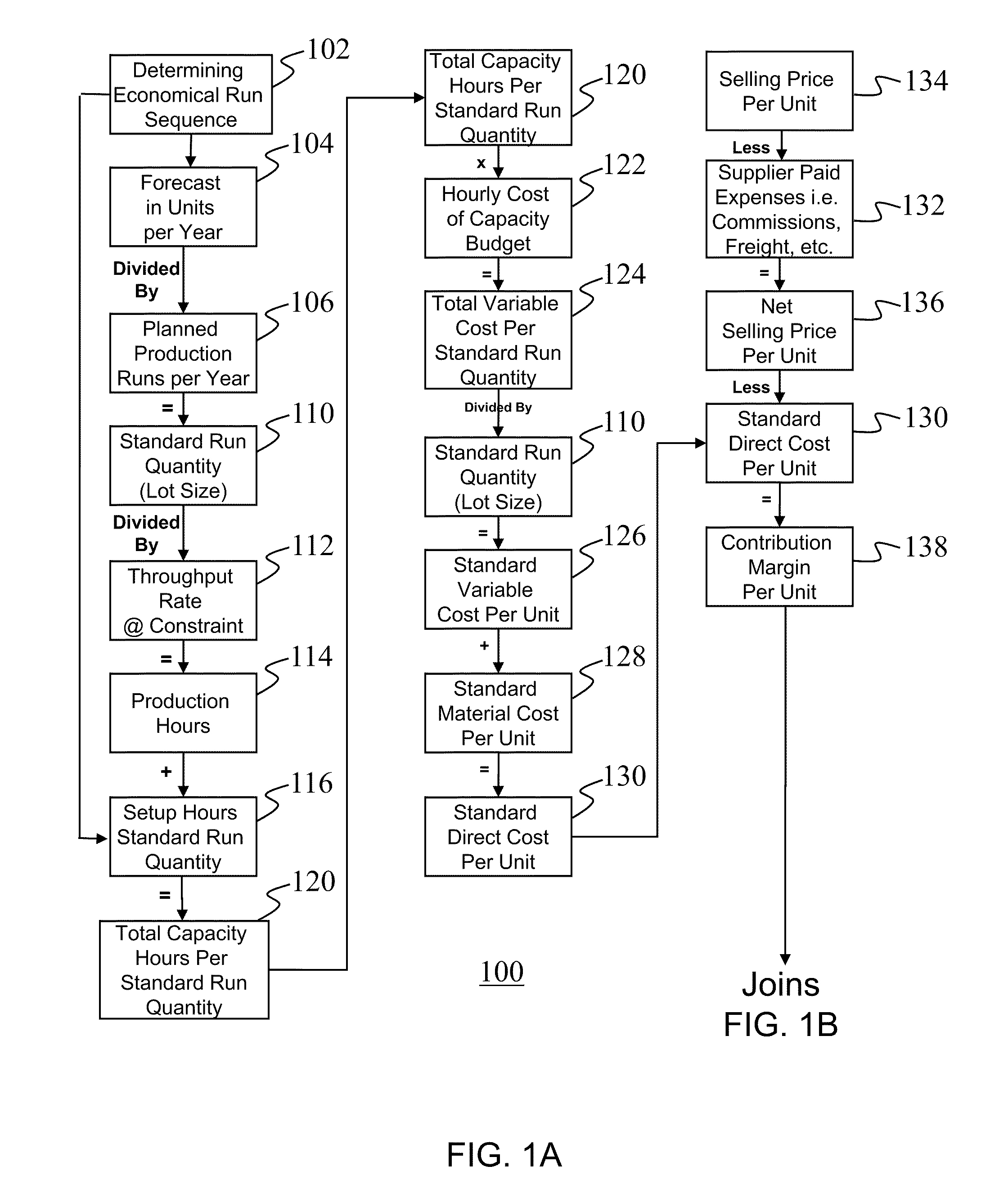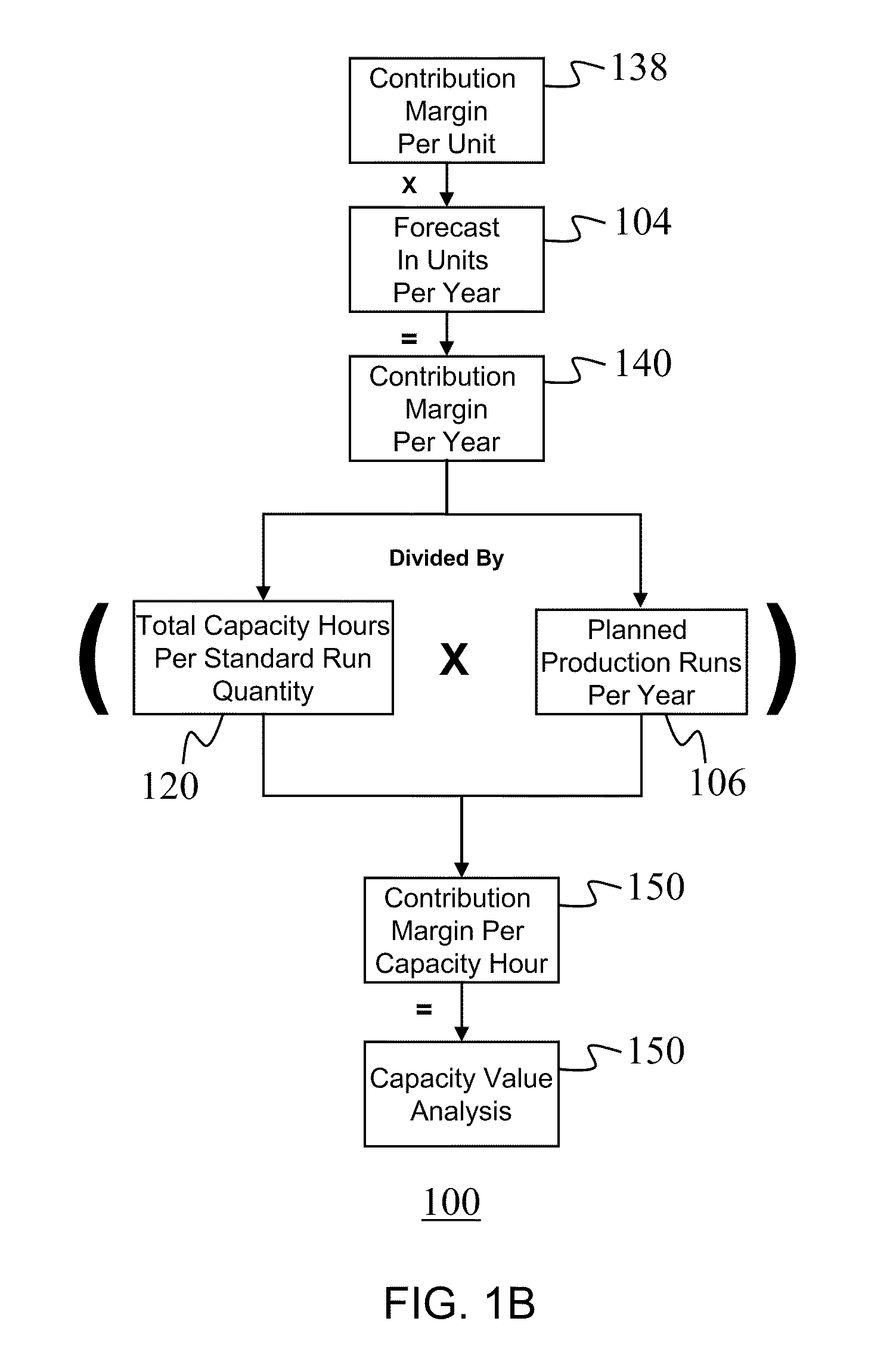[0008]The method for providing profit optimization of products and services wherein after the step of determining a
capacity value analysis, the capacity value analysis provides product rationalization with the additional steps of: dividing the products by classifications including: type of industry, customer, geographic location, type of product, and type of
raw material; determining an upper capacity value, a lower capacity value, and a mean capacity value for the classification; analyzing each product within the classification; if capacity value is not greater than zero dollars then jettison products with negative capacity value and eliminate the associated fixed overhead expenses; if capacity value is greater than zero dollars and if annual contribution margin is greater than related fixed overhead then continue manufacturing the product; if capacity value is greater than zero dollars, and if the annual contribution margin related fixed overhead is not greater than the related fixed overhead, then increase price to achieve at least min capacity value, and if customer accepted price, continue manufacturing the product; and if capacity value is greater than zero dollars, and if the annual contribution margin is not greater than the related fixed overhead, then increase price to achieve at least minimum capacity value, and if customer did not accept the accepted price, eliminate the associated fixed overhead expenses.
[0010]The method for providing profit optimization of products and services wherein after the step of determining a capacity value analysis, the capacity value analysis provides metric
for profit optimization initiatives with the additional steps of: establishing capacity value improvement initiatives by: designing for manufacturability and increasing
throughput and reducing
scrap, focus
process improvement efforts on the constraint and increasing
throughput and reducing
scrap, improving customer perceived value and converting perceived value and service into higher prices, value
engineering into products and converting perceived value and service into higher prices; evaluating initiatives based on change in capacity value; eliminating operating variances that erode contribution margin, reducing fixed overhead spending; increasing EBITDA; and increasing
business value by reducing capital employed and debt service.
[0011]A system for providing profit optimization of products and services comprising: a memory storage device for storing data wherein data may be stored and retrieved; an
input device for receiving entry of data wherein data may be input into the system; a computer processor operationally connected with the
input device and the memory storage device for determining capacity value analysis; the
input device receives data including: an economical run sequence to minimize setup time; a forecast in units per year; a number of planned production per year; a throughput rate at a constraint; a setup time in hours per standard run quantity; an hourly cost of capacity budget; a
standard material cost per unit; expenses paid to a supplier; and a selling price of a product per unit; and the computer processor determines: a standard run quantity by dividing the forecast in units per year by the number of planned production per year; a production hours by dividing the standard run quantity by the throughput rate at the constraint; the total capacity hours per standard run quantity by adding the setup time in hours per standard run quantity with the production hours; a total variable cost per standard run quantity by multiplying the total capacity hours per standard run quantity times the hourly cost of capacity budget; a standard variable cost per unit by dividing the total variable cost per standard run quantity by the standard run quantity; a standard direct cost per unit by adding the standard variable cost per unit and the
standard material cost per unit; a net selling price per unit by subtracting the expenses paid to the supplier from the selling price of the product per unit; the contribution margin per unit by subtracting the standard direct cost per unit from the net selling price per unit; a contribution margin per year by multiplying the contribution margin per unit times the forecast in units per year; and the capacity value analysis wherein the contribution margin per year is divided by the product of the total capacity hours per standard run quantity times the number of planned production runs per year; and an
output device operationally connected with the computer processor, the
output device for providing the capacity value analysis to aid in determining the maximum profitability of the company's products and services that are maximized by concentration on the company's products and services that are the most profitable based on the capacity value analysis.
[0014]The system wherein: the system provides profitable growth of the products and services after determining the capacity value analysis by the input device receiving the input of the data of product classifications with highest capacity value; target sales and marketing efforts to highest capacity value products; request for quote for targeted products, increase capacity value expectation as capacity is consumed and the computer processor determines: if quote was not awarded repeat the steps of receiving target highest capacity value products, request for quote, through increase capacity value expectation as capacity is consumed; if quote was awarded determine if capacity is available, and if capacity is available, manufacture product with free capacity minimizing capital investments until capacity value exceeds target, and if capacity is not available, increasing prices on lower capacity value products until customer does not accept price, then use free capacity for higher value opportunities and manufacture product with free capacity minimizing capital investments until capacity value exceeds target.
[0019]The computer-readable medium wherein the computer-readable medium further provides computer-
executable instructions wherein the capacity value analysis provides a metric
for profit optimization initiatives by the computer processor performing the further steps of: receiving and storing: the input of the data of profit optimization improvement initiatives by designing for manufacturability, and increasing throughput and reducing
scrap, focus
process improvement efforts on the constraint, and increasing throughput and reducing scrap; improving customer perceived value and converting perceived value and service into higher prices; value
engineering into products and converting perceived value and service into higher prices and the computer processor: evaluates initiatives based on change in capacity value, eliminates operating variances, reducing fixed overhead spending, increasing EBITDA, and increasing
business value; and the
output device provides changes in capacity value, operating variances that erode contribution margin, fixed overhead spending, EBITDA, and capital employed and debt
service information.
 Login to View More
Login to View More  Login to View More
Login to View More 


